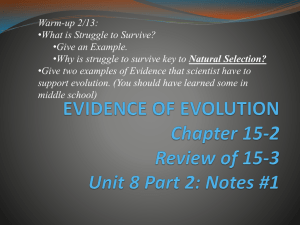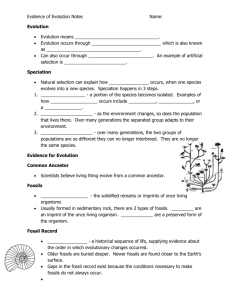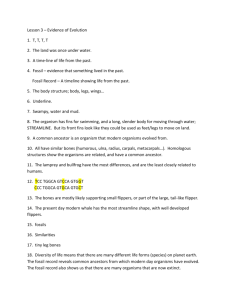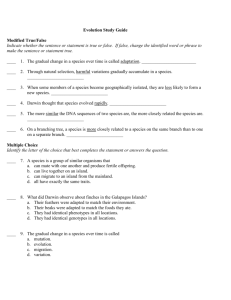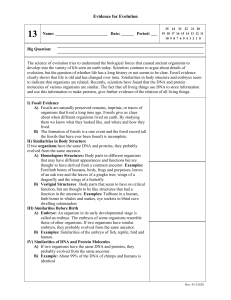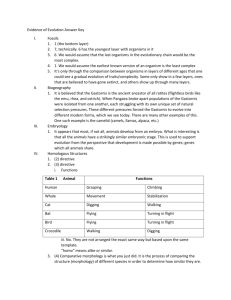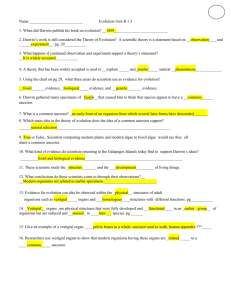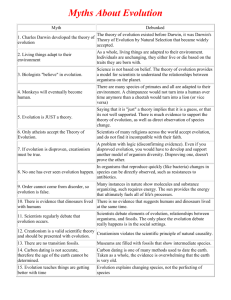Evidence for evolution Study Guide What are fossils? molds and
advertisement
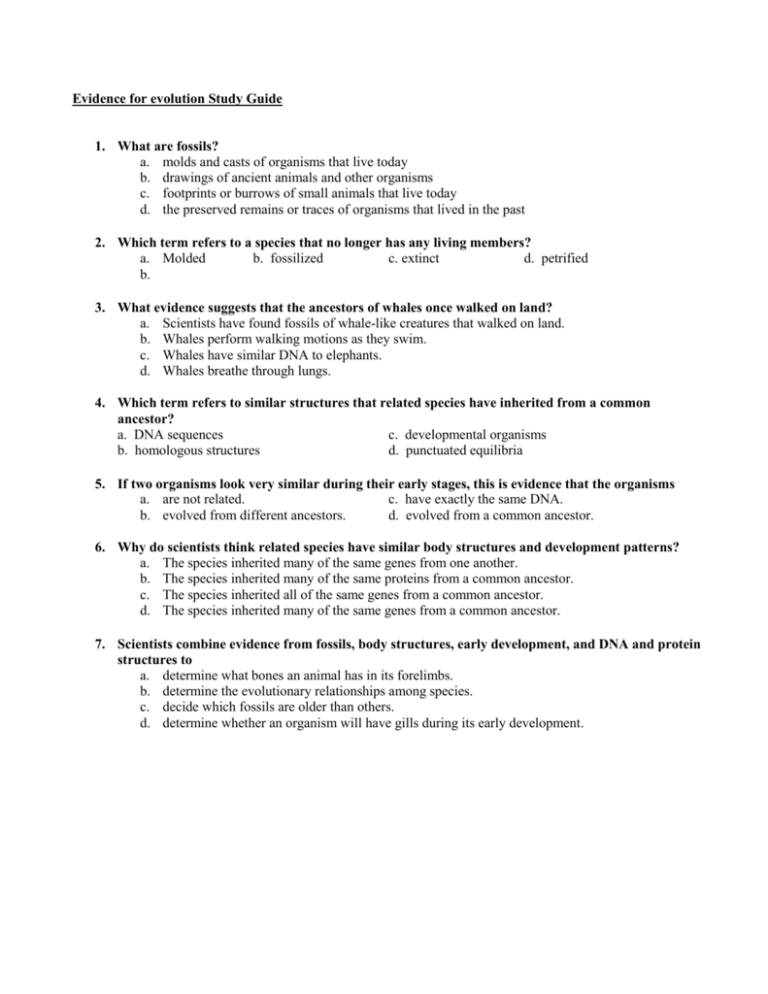
Evidence for evolution Study Guide 1. What are fossils? a. molds and casts of organisms that live today b. drawings of ancient animals and other organisms c. footprints or burrows of small animals that live today d. the preserved remains or traces of organisms that lived in the past 2. Which term refers to a species that no longer has any living members? a. Molded b. fossilized c. extinct d. petrified b. 3. What evidence suggests that the ancestors of whales once walked on land? a. Scientists have found fossils of whale-like creatures that walked on land. b. Whales perform walking motions as they swim. c. Whales have similar DNA to elephants. d. Whales breathe through lungs. 4. Which term refers to similar structures that related species have inherited from a common ancestor? a. DNA sequences c. developmental organisms b. homologous structures d. punctuated equilibria 5. If two organisms look very similar during their early stages, this is evidence that the organisms a. are not related. c. have exactly the same DNA. b. evolved from different ancestors. d. evolved from a common ancestor. 6. Why do scientists think related species have similar body structures and development patterns? a. The species inherited many of the same genes from one another. b. The species inherited many of the same proteins from a common ancestor. c. The species inherited all of the same genes from a common ancestor. d. The species inherited many of the same genes from a common ancestor. 7. Scientists combine evidence from fossils, body structures, early development, and DNA and protein structures to a. determine what bones an animal has in its forelimbs. b. determine the evolutionary relationships among species. c. decide which fossils are older than others. d. determine whether an organism will have gills during its early development.


